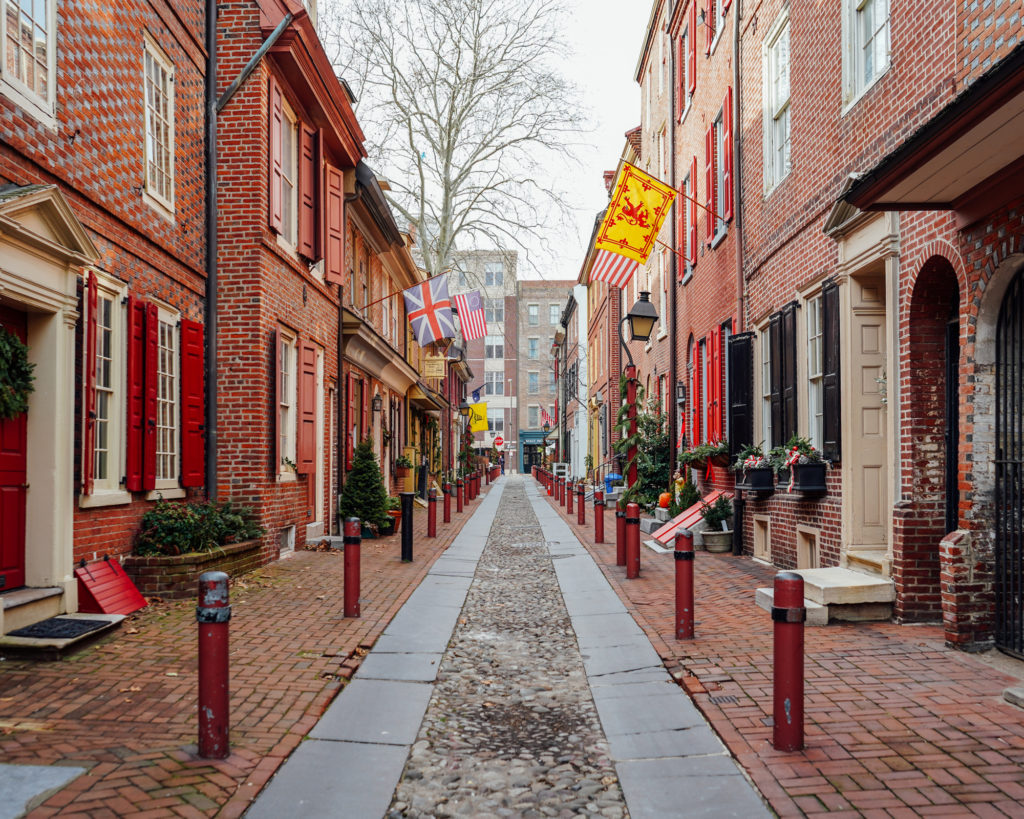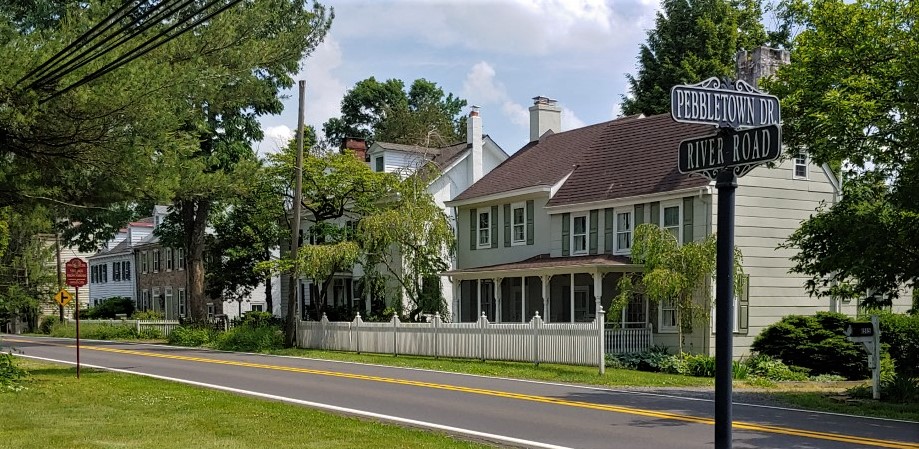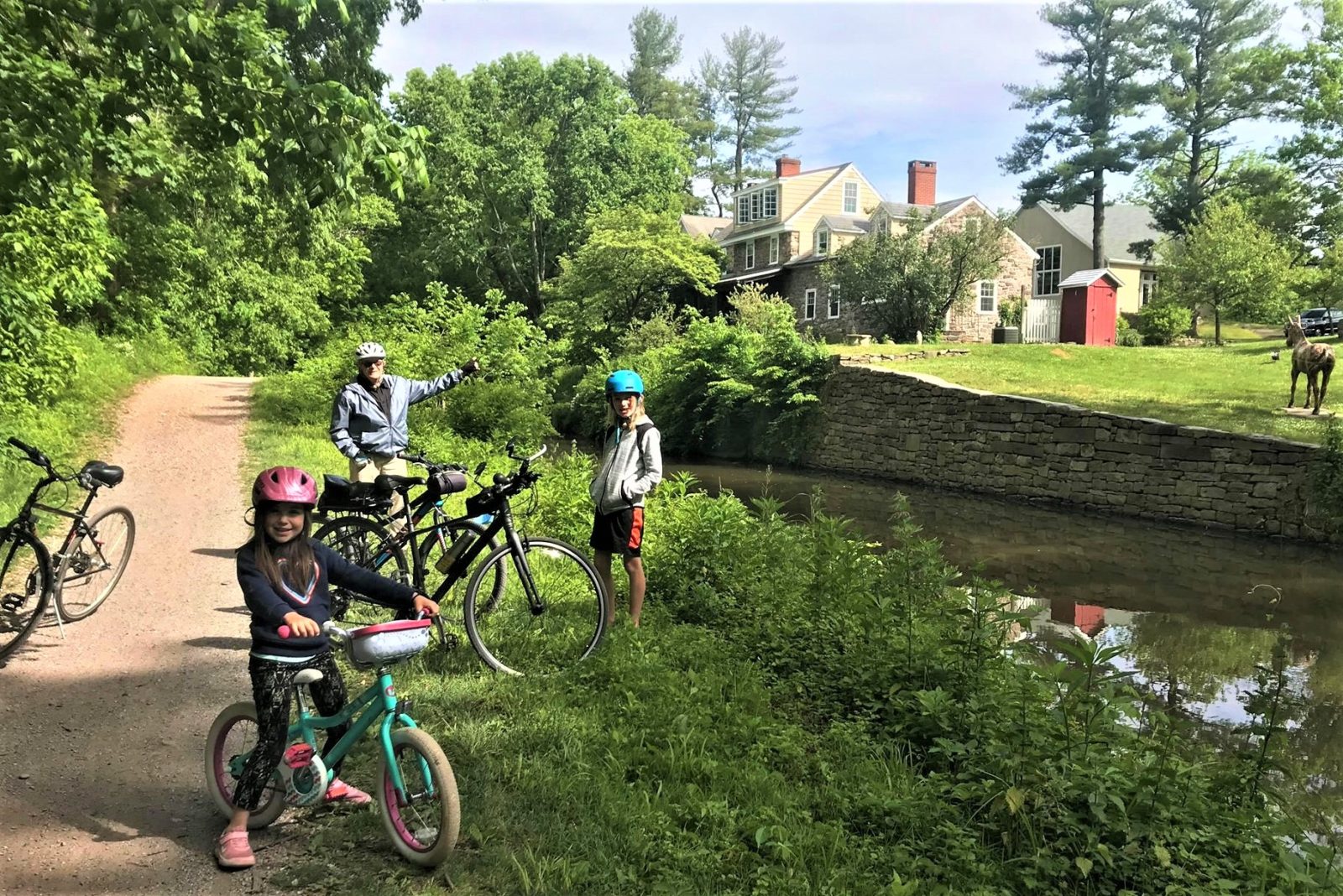An Atlantic wonder fish, rocks and a ferry put Pebbletown on the map.
If you don’t slow down on River Road in Upper Makefield, you’re likely to miss a tiny crossroads village with a big time past. People once flocked to it for nature’s cure-all: shad. They also came to gather pebbles by the wagon full and use the town ferry to cross the Delaware into New Jersey.
Since my grandkids love adventure, I suggested to Margaux, 6, Dashiell, 10 and mom Genevieve that we bike south on the Delaware Canal towpath from Bowman’s Hill a couple of miles to see if we could find any evidence of the ferry. At least check out the pebbles, always a draw. So off we went.

Pebbletown thrived in the late 1700s and early 1800s when Bucks was largely farm country. At one time it offered a hotel, tavern, store, ferry, saw mill, lumber mill, coal yard, post office and 20 homes. Then it all ended, leaving a village frozen in time.
Pebbletown began 11 years before George Washington made his famous crossing of the Delaware just downstream. The first settler was John McMaster who started a ferry service in 1765 serving toll-paying farmers on both sides of the Delaware. Other riches came from pebbles. The rounded river stones were so prolific near the landing that farm wagons loaded up on them and trundled off to Doylestown, Bristol, Philadelphia and other cities for cobblestone street paving.
Also important to the local economy was the annual run of Atlantic shad to spawning grounds upriver. Millions and millions of the 3- to 8-pound fish passed every April, turning the river into a roiling frenzy. Pebbletown took advantage. Shad lose their salinity above Morrisville where the river becomes freshwater. By the time the fish reached Pebbletown, yummy! Stake nets in the river snagged great quantities for sale. Though boney, the flesh is tasty with twice as much healthy Omega 3 fatty acids as salmon. George Washington declared shad his favorite fish. According to legend, they saved the general’s starving troops at Valley Forge. Soldiers were foraging on the Schuylkill River for grubs, snails and mussels when the water became turbulent with shad. The army suddenly had all it needed to regain strength. “The humble shad may even have turned the tide of history,” theorizes the Independence Hall Association.
By 1795, Pebbletown consisted of McMaster’s ferry house, John Beaumont’s fieldstone home and fishery plus a log cabin owned by Mahlon Doan of the infamous Doan Gang of Revolutionary War bandits. In the early 1800s, Pebbletown began to expand along River Road (Route 32). Business hummed after 24-year-old Stacy Brown arrived in1820. He rented the local store, then set up a lumberyard on 5 acres. Rafts coming down river offloaded giant logs cut into planking at Brown’s sawmill. He also built a 3-story hotel catering to stagecoach travelers on River Road, and constructed stone and clapboard tenements with adjacent shops to lure tradesmen. Brown also got the feds to open a post office in the newly crowned “Brownsburg” with Brown as postmaster. The opening of the Delaware Canal through Brownsburg in 1834 provided new opportunity. Boats from Easton delivered coal that Brown sold briskly. New riches enabled him to purchase 294 acres around the town that he farmed.

By the mid-1800s, the Brown bubble began losing air. Bridge construction in New Hope and Washington Crossing (then known as Taylorsville) caused the Brownsburg ferry to end operations. The coming of railroads made things worse. Lines terminated at New Hope, Yardley and Newtown, increasing their prosperity and making Brownsburg obsolete. In 1879 Stacy Brown died. The town’s life force died with him. No further expansion and fading business.
A River Road marker today proclaims Brownsburg’s status on the National Registry of Historic Places as an exceptional early 19th century village of “architectural purity” unchanged in 140 years. Today it’s residential with no retail activity. New mansions and tract homes have slowly eaten away at surrounding farmland. Some of them are on Pebbletown Road, a private lane arcing from Brownsburg’s crossroads to the canal where the ferry once existed.
The kids and I biked down the towpath to that general location. A high embankment channeling the waterway buries the landing with a vertical drop of 30 feet to river’s edge. From on high we viewed the famous pebbles and 13 turtles stacked up gathering afternoon sun. Dash and I contemplated how much fun it would be to tie a rope to an outstretched limb over the river, then use it to swing out over the river and jump in. We later parked the bikes on the towpath opposite a very old fieldstone house known locally as “Old Glory”. Could this be John Beaumont’s house, or is it the ferry house? Margaux piped in, “Mom, that doesn’t look like a fairy house!” Ha!
Sources include “History of Bucks County, Pa. Volume 3″ by William H. Davis published in 1918;“Colonial Inns and Taverns of Bucks County” by Marie Murphy Duess published in 2007, and a history of Brownsburg on the web at www.livingplaces.com/PA/Bucks County/Upper Makefield Township/Brownsburg.html. Thanks to Susan Taylor, executive director of the Friends of the Delaware Canal for her help.

